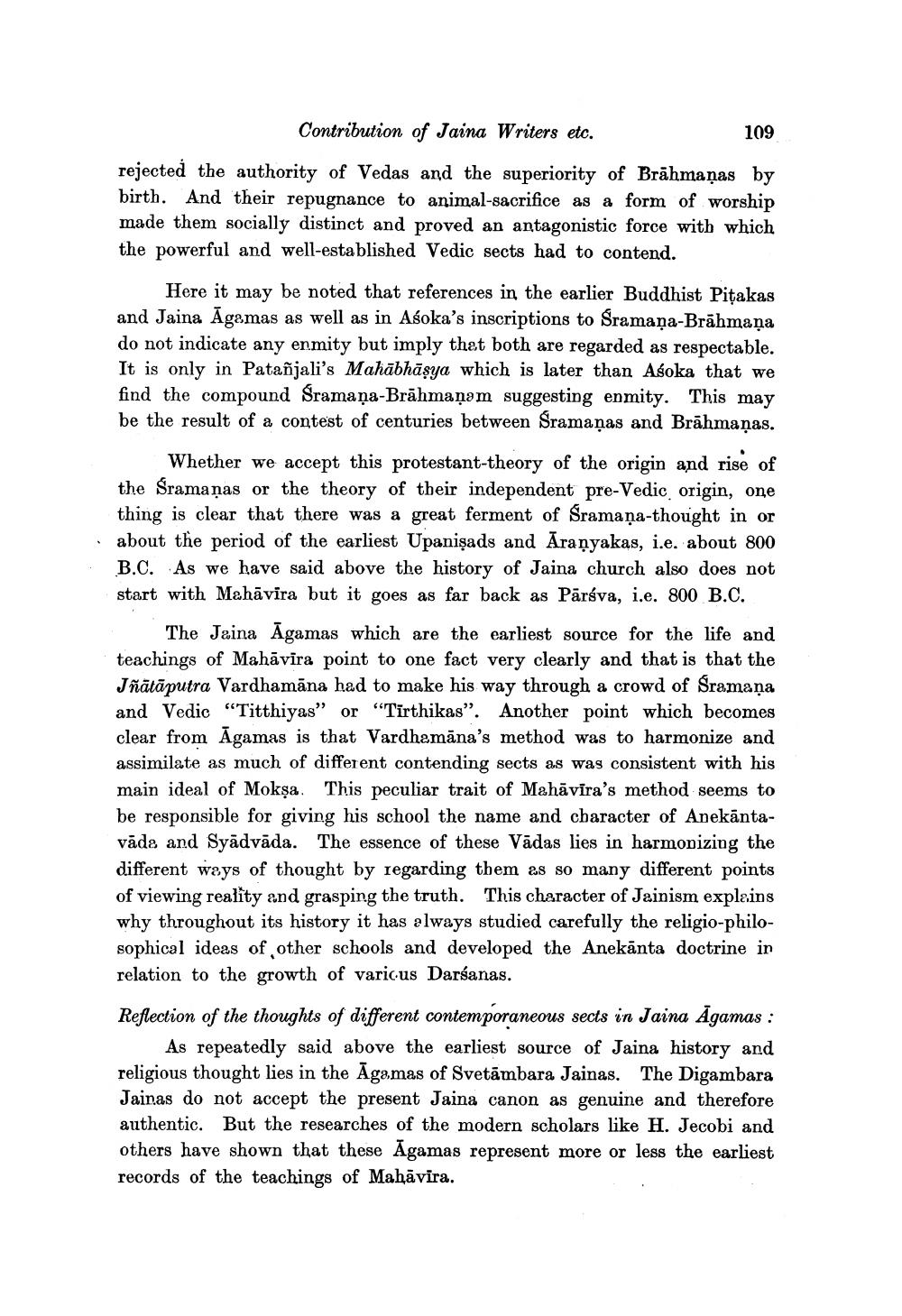Book Title: Contribution Of Jaina Writers To Nyaya Vaisesika Literature Author(s): J N Jaitley Publisher: J N Jaitley View full book textPage 5
________________ Contribution of Jaina Writers etc. 109 rejected the authority of Vedas and the superiority of Brāhmaṇas by birth. And their repugnance to animal-sacrifice as a form of worship made them socially distinct and proved an antagonistic force with which the powerful and well-established Vedic sects had to contend. Here it may be noted that references in the earlier Buddhist Pitakas and Jaina Āgamas as well as in Asoka's inscriptions to Sramaņa-Brāhmaṇa do not indicate any enmity but imply that both are regarded as respectable. It is only in Patañjali's Mahābhāsya which is later than Asoka that we find the compound Sramaņa-Brāhmaṇam suggesting enmity. This may be the result of a contest of centuries between Sramaņas and Brāhmaṇas. Whether we accept this protestant-theory of the origin and rise of the Sramaņas or the theory of their independent pre-Vedic origin, one thing is clear that there was a great ferment of Sramaņa-thought in or · about the period of the earliest Upanişads and Araṇyakas, i.e. about 800 B.C. As we have said above the history of Jaina church also does not start with Mahāvira but it goes as far back as Pārsva, i.e. 800 B.C. The Jaina Āgamas which are the earliest source for the life and teachings of Mahāvīra point to one fact very clearly and that is that the Jñātāputra Vardhamāna had to make his way through a crowd of Sramaņa and Vedic “Titthiyas” or “Tīrthikas". Another point which becomes clear from Āgamas is that Vardhamāna's method was to harmonize and assimilate as much of different contending sects as was consistent with his main ideal of Mokşa. This peculiar trait of Mahāvīra's method seems to be responsible for giving his school the name and character of Anekāntavāda and Syādvāda. The essence of these Vādas lies in harmonizing the different ways of thought by regarding them as so many different points of viewing reality and grasping the truth. This character of Jainism explains why throughout its history it has always studied carefully the religio-philosophical ideas of other schools and developed the Anekānta doctrine in relation to the growth of varicus Darsanas. Reflection of the thoughts of different contemporaneous sects in Jaina Agamas : As repeatedly said above the earliest source of Jaina history and religious thought lies in the Agamas of Svetāmbara Jainas. The Digambara Jainas do not accept the present Jaina canon as genuine and therefore authentic. But the researches of the modern scholars like H. Jecobi and others have shown that these Āgamas represent more or less the earliest records of the teachings of Mahāvīra.Page Navigation
1 ... 3 4 5 6 7 8 9 10 11 12 13 14 15 16 17 18 19 20 21 22 23 24
